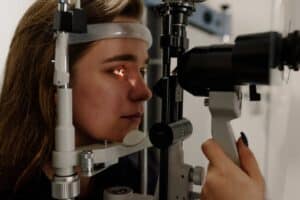Understanding Heatstroke: Symptoms, Risks, Prevention, and Treatment

Heatstroke occurs when an individual is exposed to high temperatures or the sun for too long, whether they are working, playing sports, or just sitting in a hot and sunny environment. Heatstroke is considered an emergency condition that requires a trip to the emergency room if necessary. Health experts emphasize that sunstroke, if left untreated, can cause damage to internal organs, and the longer it goes on, the more serious sunstroke becomes, and in some cases, sunstroke can be fatal.
Symptoms of heat stroke
- Some mental changes: These include convulsions, seizures (especially in children), delirium, slurred speech, irritability, and coma.
- Changes in perspiration: When you get heatstroke as a result of prolonged exposure to the sun, your skin will become dry and hot.
- Nausea: People with heatstroke experience nausea and a feeling of vomiting.
- Headache: A person gets a severe headache when exposed to sunstroke.
- Discoloration: The skin may turn red as the body temperature rises too high.
- Breathing: Breathing becomes faster and deeper.
- Heart rate: As the body tries to cool down, this puts the heart under increased stress, resulting in a higher heart rate.
Risk Factors for Heatstroke
Anyone can get sunstroke, but there are several factors that increase the risk of sunstroke, including:
- age: Your ability to cope with extreme heat depends on the strength of your central nervous system. In young children, the central nervous system is underdeveloped, while in adults over the age of 65, the nervous system begins to deteriorate gradually, making your body less able to cope with temperature changes. Therefore, both age groups have trouble staying hydrated, which increases the risk of heatstroke.
- Exerting too much effort in the sun: Military training, playing certain sports such as soccer or running long distances in hot weather can increase the risk of heat stroke.
- Sudden exposure to hot weather: When you are suddenly exposed to extreme heat, you are more likely to get sunstroke, such as during a summer heat wave or when traveling to a hotter place.
- Not using air conditioning: Using the air conditioner is especially important during hot weather to reduce the temperature of the car (if you are outside the house), which will protect you from heatstroke.
- Certain health conditions: Such as heart and lung diseases may increase your risk of heatstroke.
How to protect yourself from heatstroke?
Although high temperatures during the summer rarely pose any health threat to us, some people in some high-temperature areas may experience heatstroke as a result of prolonged exposure to the sun. Because heatstroke can be life-threatening, it’s best to avoid it. Here are some simple steps you can take to do just that:
- Clothing: Wear lightweight, loose-fitting clothing, as this allows the body to cool down properly.
- Fluids: Drinking plenty of fluids keeps your body hydrated, which is affected by the loss of fluids through sweating.
- Parked cars: Never leave anyone (especially children) in a parked car in hot weather, as the temperature in a car can rise to nearly 7 degrees Celsius in 10 minutes. Reports indicate that there were more than 500 child deaths between 1998 and 2011 in the U.S. as a result of being left in parked cars.
- Sunburn: Avoid getting sunburned as this affects the way your body cools down. Always use sunscreen (which you can learn to make at home) to avoid sunburn.
What are the treatments for heatstroke?
The main goal of treating heatstroke is to lower the temperature and prevent further damage. This can be achieved by a few steps such as:
- Immersion: By immersing the person with heatstroke in cold water or an ice bath.
- Evaporative cooling: Cold water is applied to the body while the body is ventilated to get rid of heat, this causes evaporation which cools the skin.
- Cooling blankets: Wrapping the heatstroke victim in a cooling blanket and applying ice to areas where large veins are close to the surface of the skin, such as the groin, armpit, neck and back, ensures that the temperature drops quickly.
Remember that heatstroke is a serious condition and it is important to seek medical help quickly before the condition and symptoms worsen.






